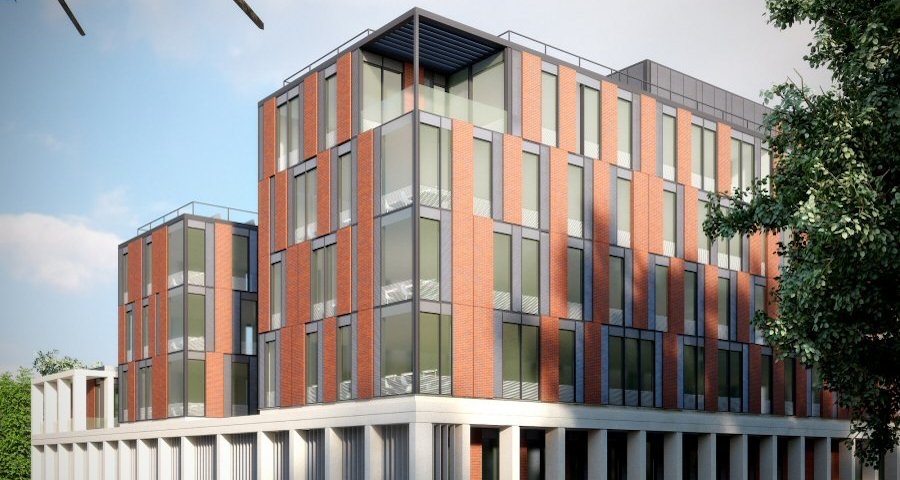
- Projects
- Posted
Leicester med school to be UK's largest non domestic passive building
The Universiy of Leicester Centre for Medicine will become the UK's largest non domestic passive house building when it is completed in 2015.
The £42m building will be designed by Associated Architects and built by Willmott Dixon. Here are some more details from the contractors:
Willmott Dixon will construct University of Leicester’s £42 million Centre for Medicine to passive house standards, providing a super insulated six-storey campus that will be home to the University’s College of Medicine, Biological Sciences and Psychology departments. Covering 12,836 square metres, it will provide teaching rooms, offices, lecture theatres, dry lab research facilities and support spaces to more than 2,350 staff and students.
To achieve the passive house standard, the Centre for Medicine has been designed to include features that minimise its energy use, including a subsoil heat exchange system to pre-warm and pre-cool incoming air, heat recovery mechanisms within the ventilation system, and automated exterior window blinds to keep rooms cool in summer, as well as super-insulation, triple glazing and LED lighting throughout.
Peter Owen, managing director for Willmott Dixon in the Midlands, said: “Passive house has been used on residential developments for a number of years and now its energy efficiency benefits are being adopted more widely. We are delighted to be at the forefront of this movement towards passive house given our experience in Camden, which has been valuable learning for our team with the support of our in-house consultancy Re-Thinking. The University of Leicester’s Centre for Medicine will be an exemplar of modern construction methods, providing students and staff with a state-of-the-art, energy efficient learning environment.”
Meanwhile, the architects say:
The building design is derived from a strong sustainability agenda and seeks to provide an EPC A rated scheme, with passive house levels of air-tightness and thermal performance, high levels of natural light, high thermal mass and mixed-mode ventilation which will use a fraction of the energy of conventional air-conditioning. Renewable technologies include PV panels and CHP and there will also be a planted wall and green roof on the side nearest Regent College to increase the ecological contribution. This ambitious programme will make the project one of the most energy efficient buildings of its kind in the UK.







